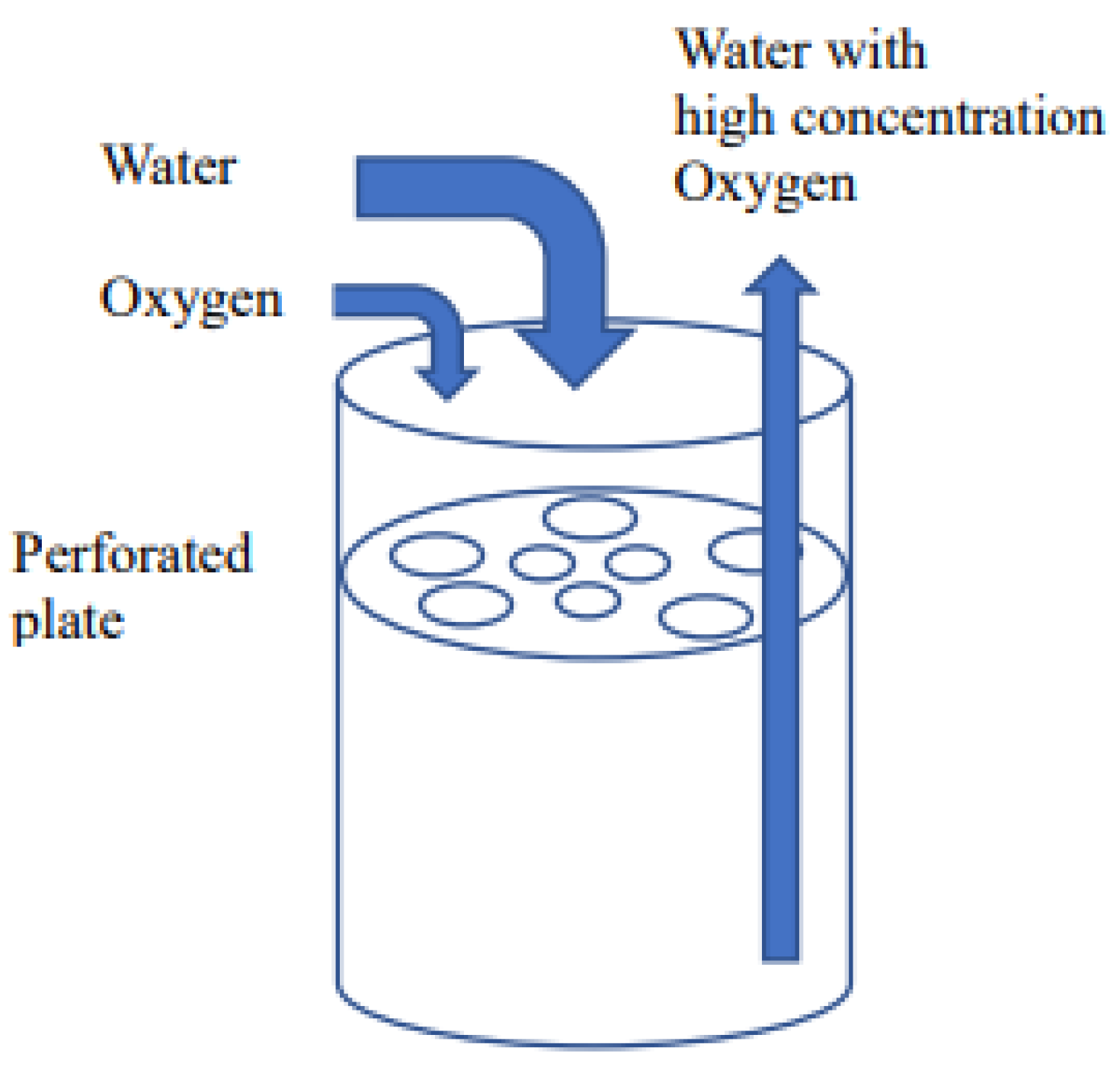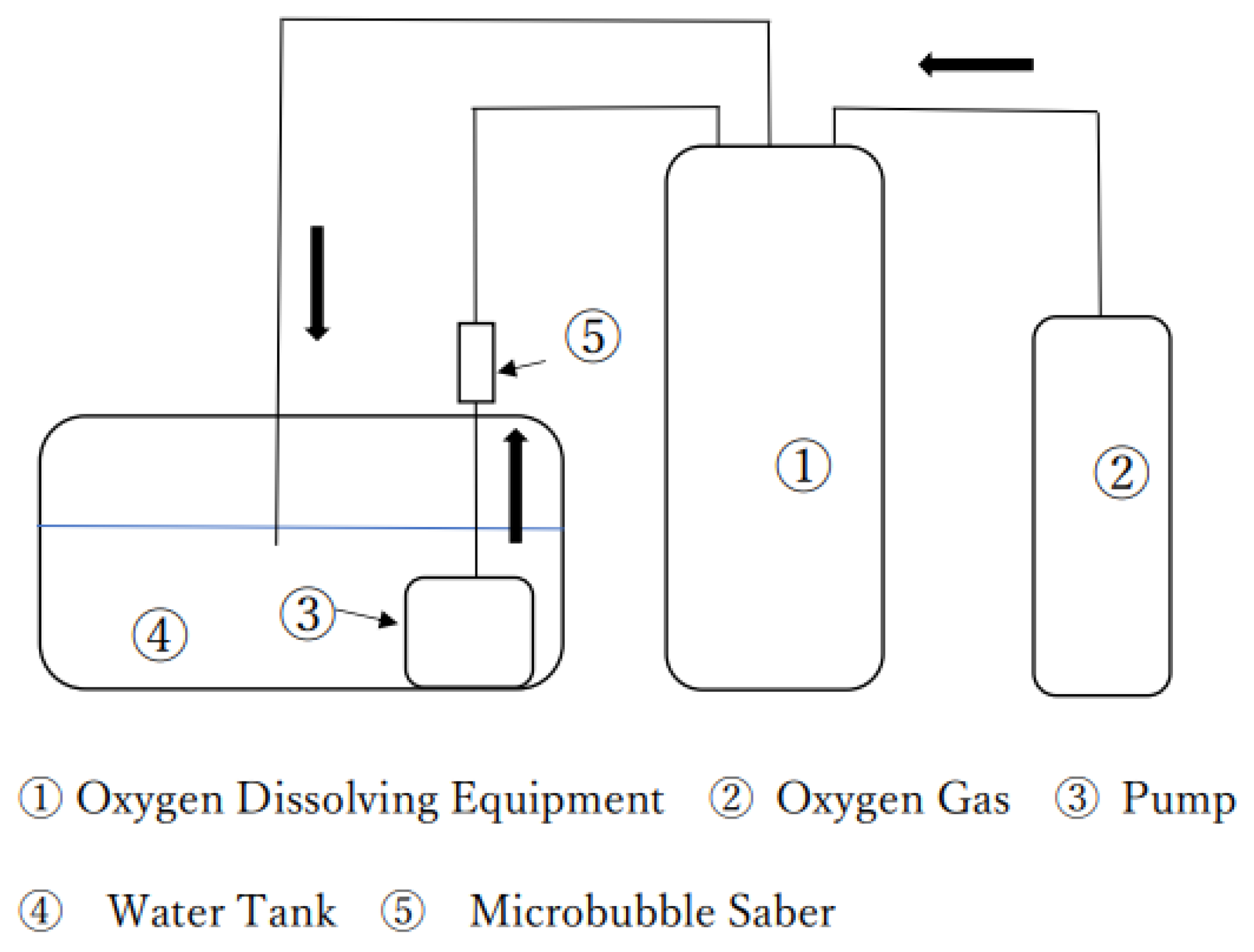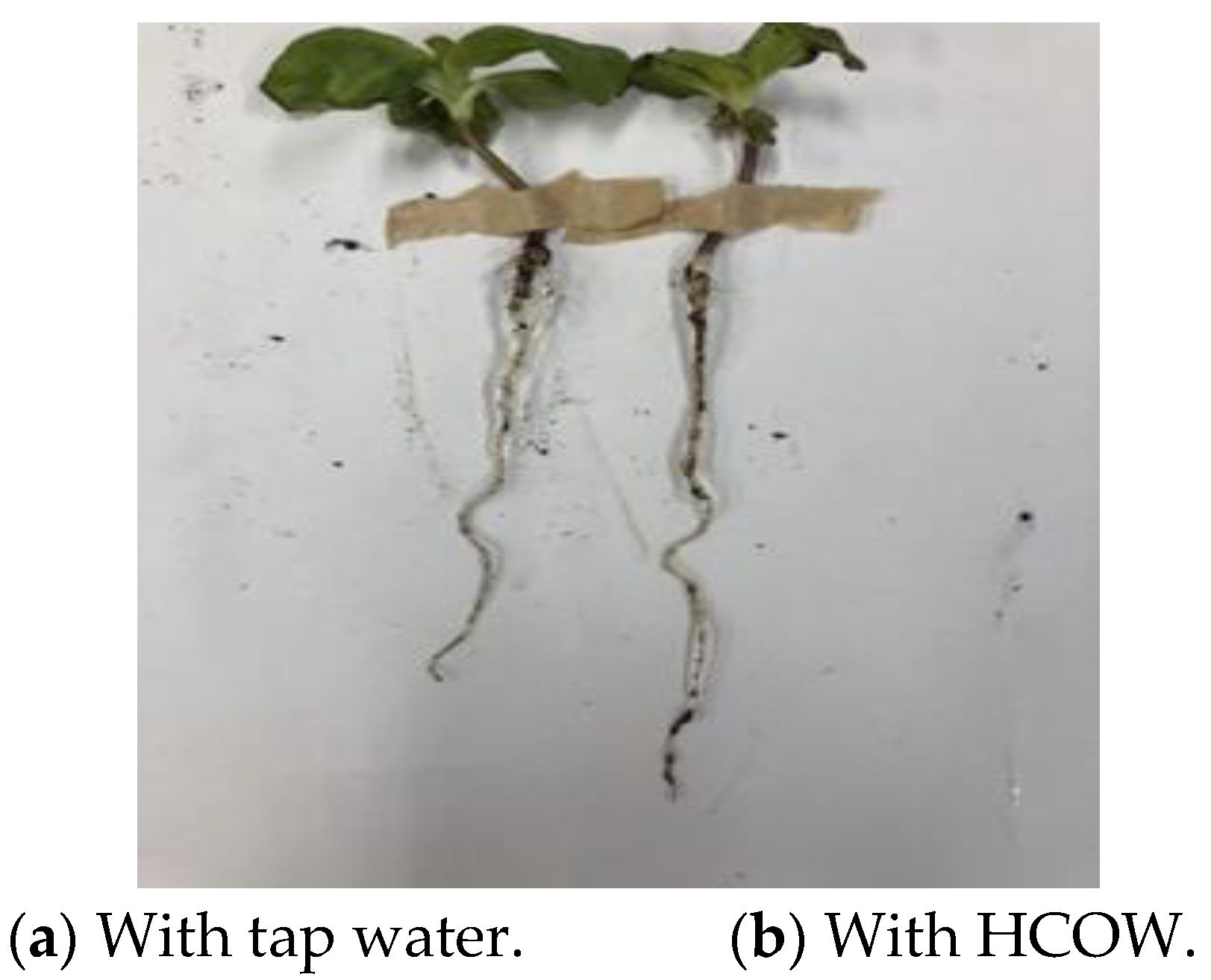The Development of a High-Concentration Oxygenated Water Generator Based on Nanobubbles and Its Application †
Abstract
:1. Introduction
2. Methods
2.1. Experiment
2.2. Perforated Plates
2.3. Cultivation of Mini-Sunflowers
3. Results and Discussions
3.1. The Effect of the Geometric Conditions of the Perforated Plate
3.2. Cultivation of the Mini-Sunflowers
4. Conclusions
Author Contributions
Funding
Institutional Review Board Statement
Informed Consent Statement
Data Availability Statement
Acknowledgments
Conflicts of Interest
References
- Tanaka, Y.; Tamaki, H.; Tanaka, K.; Tozawa, E.; Matsuzawa, H.; Toyama, T.; Kamagata, Y.; Mori, K. Duckweed-Microbe Co-Cultivation Method for Isolating a Wide Variety of Microbes Including Taxonomically Novel Microbes. Microbes Environ. 2018, 33, 402–405. [Google Scholar] [CrossRef] [PubMed]
- Ushikubo, F.Y.; Oshita, S.; Furukawa, T.; Makino, Y.; Kawagoe, Y.; Furihata, K.; Shiina, T. Properties of micro/nano-bubble water and its possible effect on physiological activity. J. Agric. Mech. 2008, 70, 15–16. [Google Scholar]
- Zhu, N. Development of High Concentration Oxygen Water Generator based on Nanobubble. In Proceedings of the 2022 JSME-IIP/ASME-ISPS Joint International Conference on Micromechatronics for Information and Precision Equipment, Nagoya, Japan, 28–31 August 2021. [Google Scholar]





| Water quantity | 54 L |
| Flow quantity of oxygen | 1 L/min |
| Flow quantity of water | 9 L/min |
| Oxygen supply pressure | 0.7 MPa |
| Oxygen inlet pressure | 0.2 MPa |
| New Type 1 | New Type 2 | |
|---|---|---|
| Diameter [mm] | 155 | 155 |
| Thick [mm] | 2 | 2 |
| Number of holes | 77 | 13 |
| Hole diameter [mm] | 3 | 3 |
| Material | SUS304 | SUS304 |
| Root Length [mm] | Mass [g] | |
|---|---|---|
| HCOW | 145 | 0.239 |
| Tap Water | 115 | 0.195 |
Disclaimer/Publisher’s Note: The statements, opinions and data contained in all publications are solely those of the individual author(s) and contributor(s) and not of MDPI and/or the editor(s). MDPI and/or the editor(s) disclaim responsibility for any injury to people or property resulting from any ideas, methods, instructions or products referred to in the content. |
© 2023 by the authors. Licensee MDPI, Basel, Switzerland. This article is an open access article distributed under the terms and conditions of the Creative Commons Attribution (CC BY) license (https://creativecommons.org/licenses/by/4.0/).
Share and Cite
Zhu, N.; Li, M.; Shibata, K. The Development of a High-Concentration Oxygenated Water Generator Based on Nanobubbles and Its Application. Eng. Proc. 2023, 55, 23. https://doi.org/10.3390/engproc2023055023
Zhu N, Li M, Shibata K. The Development of a High-Concentration Oxygenated Water Generator Based on Nanobubbles and Its Application. Engineering Proceedings. 2023; 55(1):23. https://doi.org/10.3390/engproc2023055023
Chicago/Turabian StyleZhu, Ning, Minyu Li, and Kohei Shibata. 2023. "The Development of a High-Concentration Oxygenated Water Generator Based on Nanobubbles and Its Application" Engineering Proceedings 55, no. 1: 23. https://doi.org/10.3390/engproc2023055023
APA StyleZhu, N., Li, M., & Shibata, K. (2023). The Development of a High-Concentration Oxygenated Water Generator Based on Nanobubbles and Its Application. Engineering Proceedings, 55(1), 23. https://doi.org/10.3390/engproc2023055023






